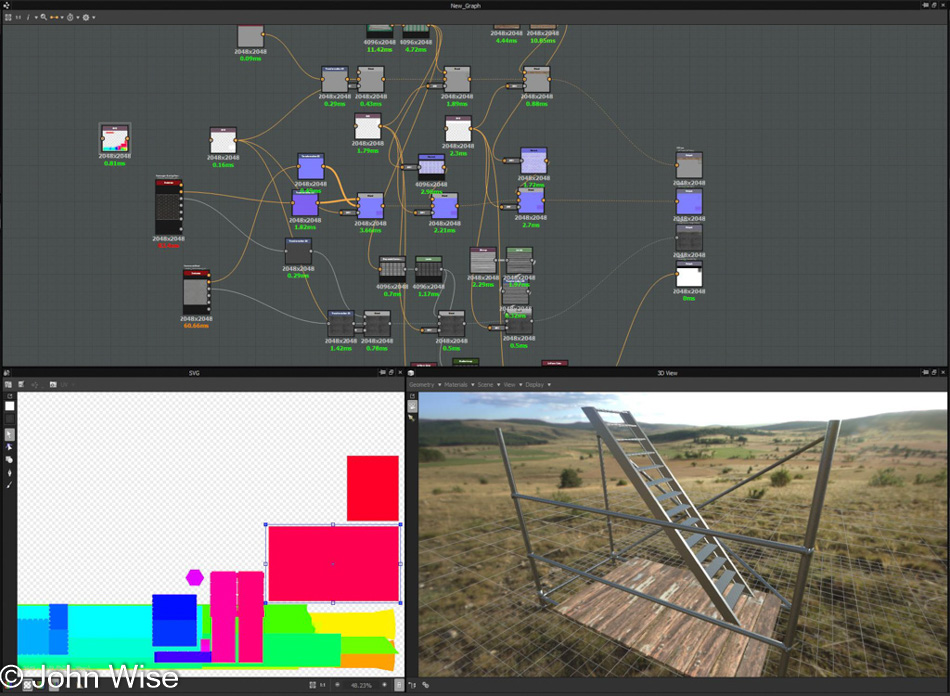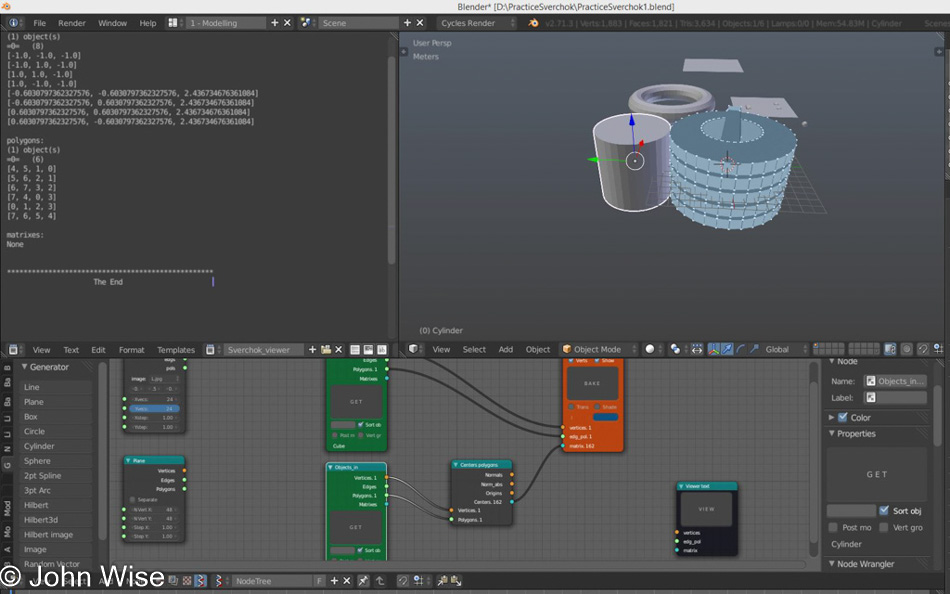
From time to time, I’ll offer a glimpse into our workflow and what we’re working on. This particular Wednesday morning, redacted, has been working primarily in Allegorithmic’s Substance Designer on some scaffolding elements. By no means can he really work exclusively in one piece of software, and so he has Blender, Photoshop, and Unreal Engine open simultaneously. Lucky him, his PC has 64GB of RAM paired to an Intel i7-4730k, a GTX 780Ti, and two Asus 27″ 2560×1440 monitors, so he has plenty of horsepower and screen real estate to easily move between programs. With redacted primary responsibility being Unreal Engine authoring, the extra RAM comes in handy during the worst part of redacteds week, when he has to build lighting for our environment.

At another desk in our office, Dani is learning about Adobe’s Illustrator program. For the next week, she’ll be immersed in that and Photoshop. After nearly two months of working in Blender daily, actually nearly seven days a week since the end of May, she’s proficient enough with mesh building and UV unwrapping that it was time to have her teach herself about the next two programs she’ll have to master. This is her first design in Illustrator; her next will be a dung ball based on Brinn’s profile.

After a quick refresher in Blender following his Italian holiday, Luis is diving into a great big complex addon for Blender called Sverchok. A year ago, I would have called this a Russian program, but since then, a number of people from around the world have jumped in to help Nikitron, including indispensable help from Jimmy Gunawan from BlenderSushi, who has thoroughly tested Sverchok and made countless recommendations. Sverchok is Russian for “Cricket.” It is greatly influenced by “Grasshopper” for the 3D modeling program Rhino in that it, too is a parametric tool for architects and designers. For us, this software needs to tie in with plans that include After Effects, Trapcode Particular, Plexus, and Touch Designer, all wrapped up in a tight VR world.